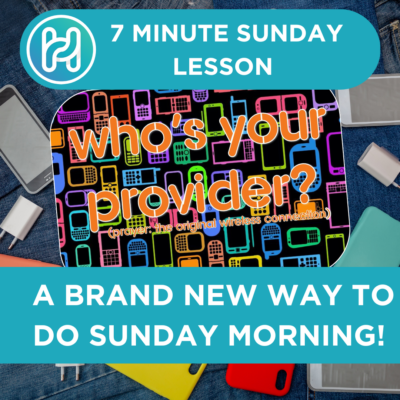Youth Ministry Hints, Youth Ministry Lessons, Youth Ministry Resources
Closer: Finishing With Intentionality
The Closer: Finishing with Intentionality? How do you finish your message, sermon, and lesson? Do you end well or stumble toward the finish with no real plan? Nationally known speaker Chad Poe offers up some expert advice in his latest guest post!
You see parents easing into your space in the back of the room. You observe the sun setting through the windows. It is time to wrap up your message. Your introduction was incredible (You started the message by setting a peach on fire with a flint rock you got from the CBS: Survivor website…and it hit home). You walked through the text with key takeaways palatable to the most distracted middle schoolers. You talked about Greek and Hebrew words, and you even made a reference to the Talmud and explained Aramaic with reference to words like ‘sheesh,’ ‘ghost,’ and ‘bet.’ To break things up, you looped in a Tik Tok dance that will inevitably fade in popularity the moment you show it.
There are four minutes left. The students are captivated and ready to either take a step into a walk with Jesus or take another step toward deeper discipleship.
How do you close out your message?
At times, wrapping up a message seems like an afterthought. You have zero desire to be manipulative. However, you want your students to do…something. Anything.
What do you do? Remember. Return. Rely.
Remember
You don’t change hearts. Jesus does. No matter how clever or captivating you are, you will be in a predicament if you think you are better at ‘clever’ or ‘captivating’ than YouTube. If you, even as a good communicator, can coerce someone into something, there is someone better who can talk that person out of it.
Return
The most important aspect of closing out a message is to use the language you just preached intentionally. There are definite exceptions. It is great to have a general response prepared for hearers in the event you only have one opportunity with a given group (any communicator should be able to call the listener to respond to the truth of Romans 10:9-definitely have that in your bag). However, when we teach passages, we need to make sure we remember WHY that passage mattered in the first place.
Think about it. You have developed a message from Colossians 1:15-23 (have a ‘go-to’ message on this passage!). In it, you have stated that Jesus is Lord of everything and that only He can deal with our sin-war with God. You used an illustration about being stuck in an elevator and how the building superintendent was the only one able to free you. Your students are there and with you, especially the claustrophobic ones.
It makes no sense whatsoever not to loop that language into the close of your message. Think about it:
It makes no sense from a teaching standpoint; repetition is good for the soul.
It makes no sense from a learning standpoint; why ask your listener to deboard from that primary train of thought and jump on another?
It makes no sense from a text work standpoint; it is easier to develop a message with the end in mind.
It makes no sense from a discipleship standpoint; you teach your students how important Bible interaction for daily living is, so why stop interacting with the text you felt impressed to teach?
It does not make any sense. It is lazy.
When we teach on a week-to-week basis, the best way to wrap up teaching time is to diversify what you expect a student to do based on the actual text you taught. It teaches the valuable symbiotic relationship between message delivery and message conclusion. As my friend Dave Rhodes says, “The goal of a message is not to get through a message. It is to get through to people.”
Rely
Our teaching time doesn’t start with us and doesn’t end with us. Try as we may, there are no super teachers who don’t need God to move when they teach. There are also no teachers who don’t need to be equipped, caring leaders to help facilitate the next steps for students.
- Rely on Community
Find ways to get students to interact over your message and the passage you taught. There is an old adage that ‘circles are better than rows. Today, our circles are more extensive and more diverse than we ever would have imagined, even five years ago. Find ways to get your students to discuss the teaching time continually.
- Rely on your Volunteers
Your leaders are not attending a Wednesday night because they have nothing better to do. Many of them come directly from work or kid activities to ensure you are supported. They love students, and they love you. Have you set them up to be in the community with your students? Are they equipped in ways that allow them to track your teaching?
- Rely on the Spirit
Ultimately, the life of your message is that God uses the ink on the paper of your Bible to show your listeners Jesus by the power of the Holy Spirit. We are doing a disservice to our listeners to act as if the power of our message works apart from the power of the Spirit. We all have to fight the desire to view the immediate response as a success and the lack of quick response as a failure.
There is a weight that comes with being tasked to teach anyone…especially teenagers. I hope and pray that these insights benefit you as you seek to engage your students with the infinite good news of our crucified, resurrected savior, who is the hope of the world.
 Chad Poe has been speaking biblical truth into students’ lives for years. He believes in the importance of relationships and seeks to get to know people when he is away from the stage. Ultimately, Chad hopes to see students move into a deeper relationship with Christ through the power of God’s Word. In turn, those students will impact their community and world for Christ’s sake.
Chad Poe has been speaking biblical truth into students’ lives for years. He believes in the importance of relationships and seeks to get to know people when he is away from the stage. Ultimately, Chad hopes to see students move into a deeper relationship with Christ through the power of God’s Word. In turn, those students will impact their community and world for Christ’s sake.
Chad is currently the Teaching Pastor at Grace Bible Church. He is the co-host of the Hold On Podcast and is the founder of Through-line Cohort-a ministry that exists to develop communicators of the Bible. He is married to Hope, and they have three sons (Shepherd, Charlie, and Alder) and a daughter (Noli).




